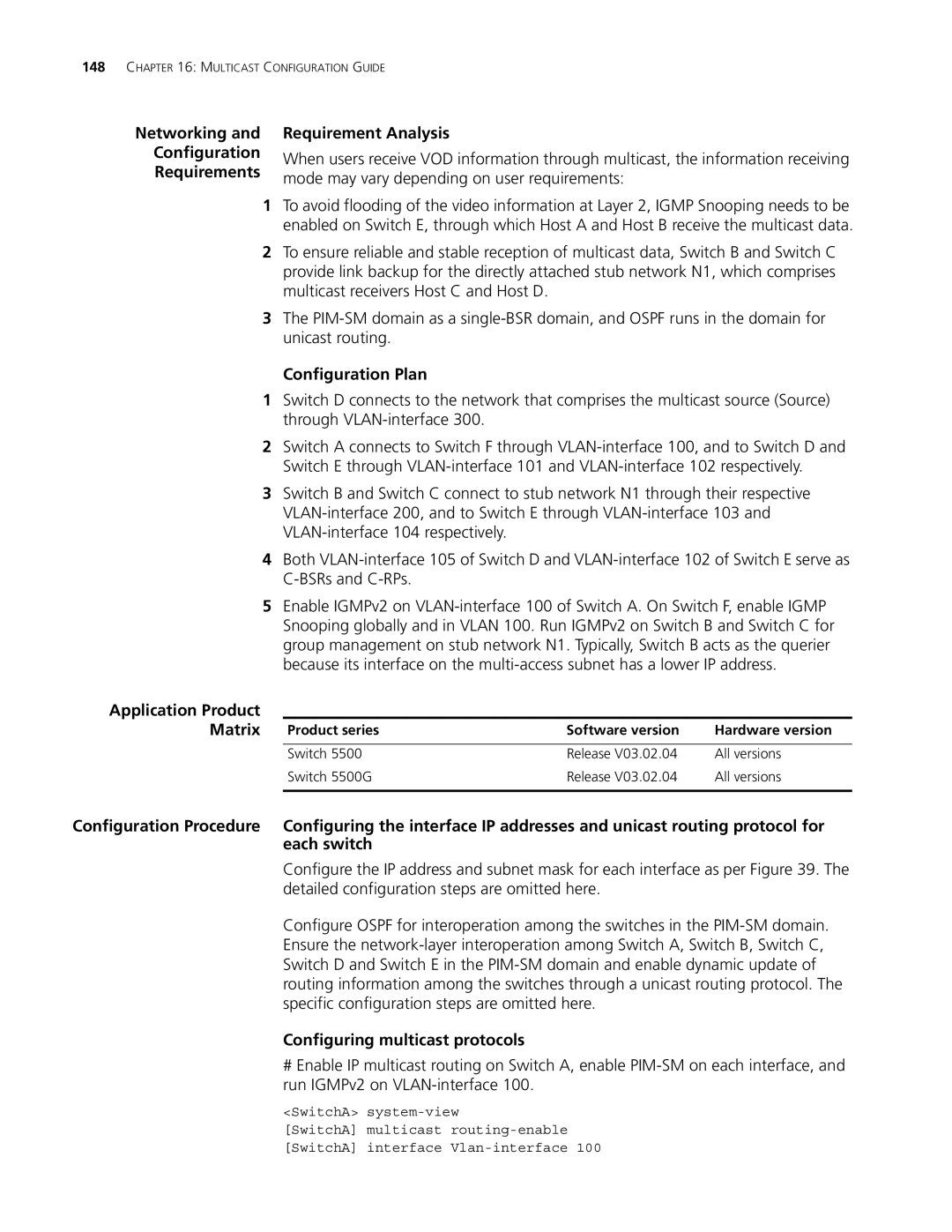148CHAPTER 16: MULTICAST CONFIGURATION GUIDE
Networking and | Requirement Analysis | |
Configuration | When users receive VOD information through multicast, the information receiving | |
Requirements | ||
mode may vary depending on user requirements: | ||
|
1To avoid flooding of the video information at Layer 2, IGMP Snooping needs to be enabled on Switch E, through which Host A and Host B receive the multicast data.
2To ensure reliable and stable reception of multicast data, Switch B and Switch C provide link backup for the directly attached stub network N1, which comprises multicast receivers Host C and Host D.
3The
Configuration Plan
1Switch D connects to the network that comprises the multicast source (Source) through
2Switch A connects to Switch F through
3Switch B and Switch C connect to stub network N1 through their respective
4Both
5Enable IGMPv2 on
Application Product
Matrix | Product series | Software version | Hardware version |
|
|
|
|
| Switch 5500 | Release V03.02.04 | All versions |
| Switch 5500G | Release V03.02.04 | All versions |
|
|
|
|
Configuration Procedure Configuring the interface IP addresses and unicast routing protocol for each switch
Configure the IP address and subnet mask for each interface as per Figure 39. The detailed configuration steps are omitted here.
Configure OSPF for interoperation among the switches in the
Configuring multicast protocols
#Enable IP multicast routing on Switch A, enable
<SwitchA>
[SwitchA] multicast
[SwitchA] interface
